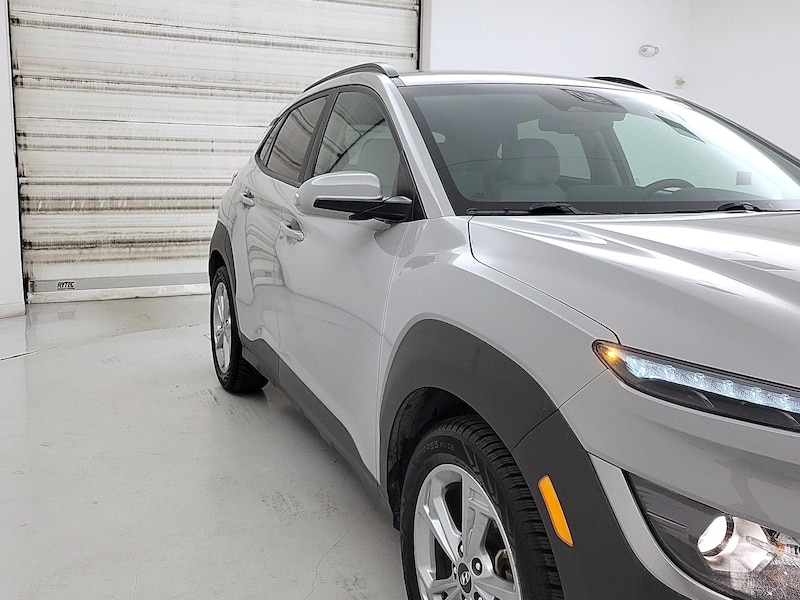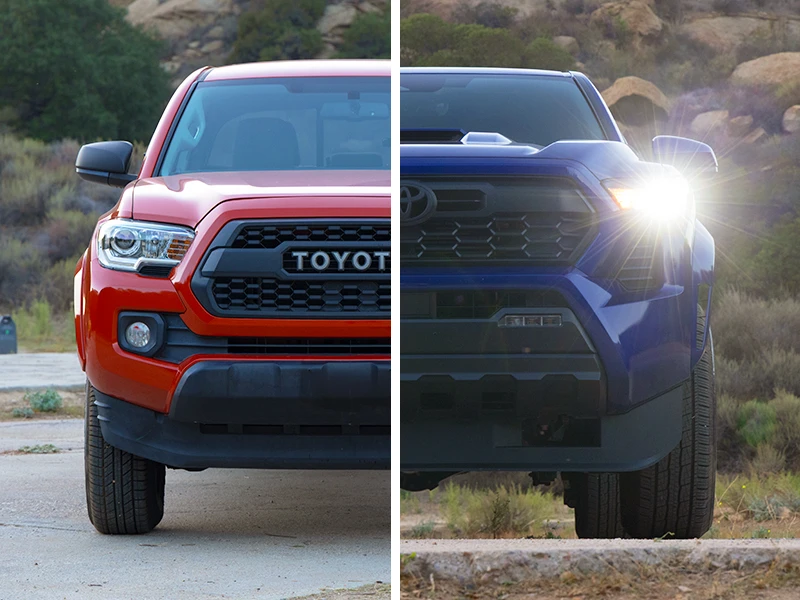Go further in these compact SUVs.
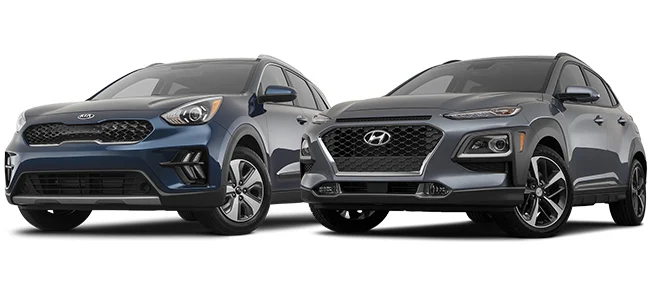
If you're looking for a small SUV with a hybrid or electric engine, you're probably weighing the benefits of the Kia Niro vs. the Hyundai Kona. Both are newer to the market and will appeal if you're looking for a small but versatile SUV. Whether you're packing up for camping trips, transporting kids to activities, or just want a bit of extra space for your friends, the Niro and the Kona are worth considering.
However, there are plenty of differences between them. If you're looking for a small, hybrid, or electric SUV, this comparison will give you all the information you need to choose between the Niro and the Kona.
This article is part of our small SUV comparison series. Looking to see how other compact crossovers stack up? Check out these related articles:
Side-by-Side Comparison

Kia Niro | Hyundai Kona | |
|---|---|---|
Average Price | $19,500 | $19,500 |
Performance | ||
Base Engine | 1.6L four-cylinder | 2.0L four-cylinder |
Horsepower | 139 hp on the hybrid | 147 hp on the base 2.0L |
MPG | 105 mpg combined with a full charge | 30 mpg combined |
Interior | ||
Seating | 5 | 5 |
Cargo Space | 19.4 cu ft | 19.2 cu ft |
Front-seat Legroom | 41.7 inches | 41.5 inches |
Rear-seat Legroom | 37.4 inches | 34.6 inches |
Overall Interior Space | 120.3 cu ft | 113.3 cu ft |
Ratings | ||
Tailpipe Emissions | 90 g/mile | 300 g/mile |
NHTSA Safety Rating | Overall 4/5 | Overall 5/5 |
Features and Trim Options
The interiors of the Kia Niro and the Hyundai Kona are similar. For example, in the 2019 model year both vehicles come with cloth seats, Apple Carplay® and Android Auto™ connectivity, Bluetooth® streaming, and a seven-inch touch-screen display in the base trim level. Both offer upgrades like leather seats at higher trim levels so you can get the level of luxury you need.
The Kia Niro
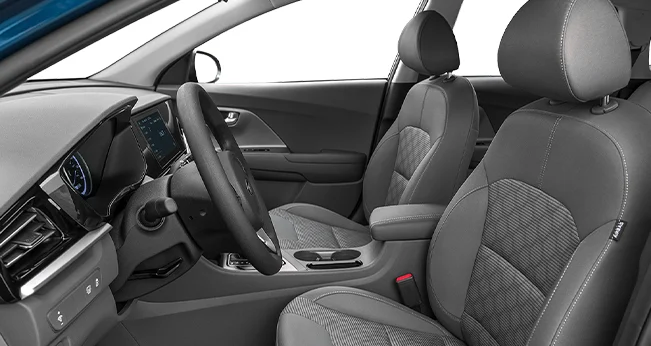
Overall, the 2019 Kia Niro comes with six trim options, giving you a variety of points at which to access the car. If you want driver-assist features like emergency braking and lane-keep assist, you'll want to opt for at least the LX trim, which also brings in keyless entry. For a sunroof and leather upholstery, choose the Touring trim. All 2019–2020 Kia Niros come with:
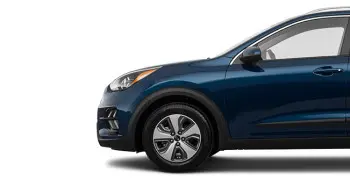
A USB port and a four-speaker audio system
A backup camera
A split back seat, which allows you to utilize part of the back seat for passengers while increasing cargo space.
The Hyundai Kona

The Hyundai Kona is sold as two models: the Kona, which comes with an internal combustion engine, and the Kona EV, which is fully electric and offered in model years 2019 and later. The Kona offers an all-wheel drive option, too, in case you fancy a little light off-roading. The Kona also comes with four trim levels, while the Kona EV has three. All 2019 Hyundai Kona's come with:

Lane keep assist and forward collision warning
Two USB ports and a six-speaker audio system
Remote keyless entry
Engine Options
One major difference between the Niro and the Kona is in the engine options. All years of the Niro come with the option for a hybrid or plug-in hybrid engine and, starting with the 2019 model year, a fully electric powertrain is also available. The Hyundai Kona, however, was originally introduced with an internal combustion engine. The Kona EV, which has a fully electric engine, was introduced in 2019. There is currently no hybrid Kona sold in the U.S.
The Kia Niro

The 2017–2018 Kia Niro comes standard with a 139 hp hybrid powertrain, which pairs a 1.6L four-cylinder engine and electric motor.
The 2019 Niro comes standard with the same hybrid options, but also introduces an optional 201 hp fully-electric motor.
The Hyundai Kona
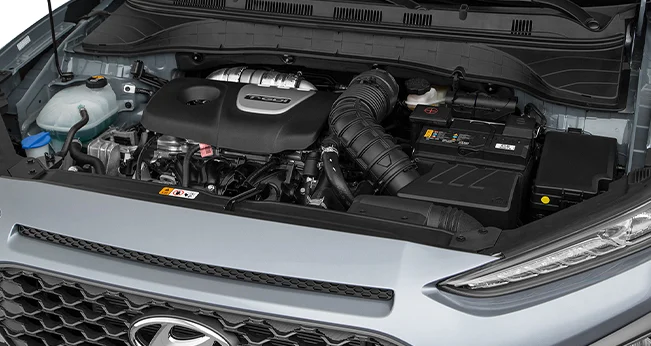
Model years 2018–2021 come with a 2.0L four-cylinder 147 hp engine.
Model years 2018–2021 have an optional 175 hp 1.6L turbo four-cylinder that produces 175 hp.
The Kona EV comes standard with a 201 hp electric motor from 2019.
Fuel Economy
With hybrid and electric options, both the Hyundai Kona and Kia Niro appeal to drivers who want to get further with less. The 2019 Kia Niro with the 201 hp electric powertrain gets an EPA-estimated 112 MPGe combined, with a full charge.†† The 2019 Kia Niro with the 139 hp plug-in hybrid engine gets an EPA-estimated 105 MPGe combined, with a full charge.†† The 2019 Kia Niro with the hybrid powertrain has an EPA-estimated 50 mpg combined fuel economy.††
The 2019 Hyundai Kona EV with the 201 hp electric powertrain gets an EPA-estimated 120 MPGe combined, with a full charge.†† The base model of the 2019 Kona, with a 147 hp 2L engine gets an EPA-estimated 30 mpg combined, while the 2019 Kona with the 1.6L 175 hp engine has an EPA-estimated 27 mpg combined fuel economy.†† If you're looking to maximize your reach, the Hyundai Kona EV is a great choice.
Tech Features
The Hyundai Kona and the Kia Niro both make it easy to stay connected. In the 2019 model year, both cars come standard with Apple Carplay, Android Auto, and Bluetooth connectivity. Here are the tech features you can expect from each.
The 2019 Kia Niro:
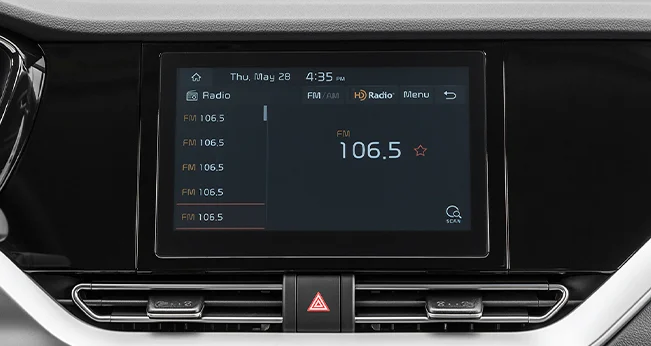
Available navigation (EX/S Touring trim and higher)
Available eight-speaker Harman Kardon® audio system (EX/S Touring trim and higher)
Available wireless charging station (EX/S Touring trim and higher)
The 2019 Hyundai Kona:

Standard dual-USB ports and 12-volt outlet
Available eight-speaker audio system (SEL trim and higher)
Available wireless charging station (Ultimate trim)
Cargo Space
The Kia Niro and the Hyundai Kona are both small SUVs with comparable cargo spaces. Both have a standard split back seat, which allows you to seat 1–2 passengers in the back while also utilizing cargo space. Ultimately, the Niro is slightly more spacious.
Kia Niro
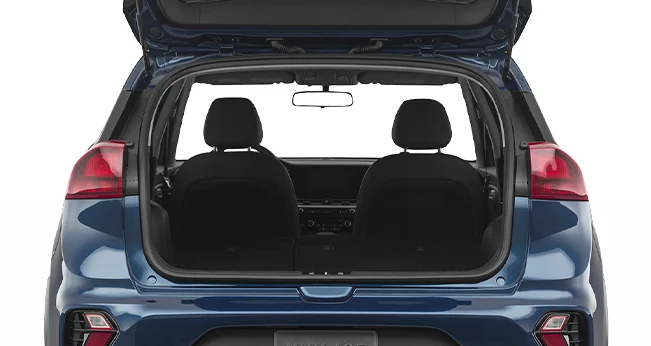
The 2019 Kia Niro offers 19.4 cu ft of cargo space, increasing to 54.5 cu ft with the rear seats folded flat.
Hyundai Kona

The 2019 Hyundai Kona has 19.2 cu ft of cargo space, increasing to 45.8 cu ft when the rear seats are folded flat.
Pricing
The Kia Niro and the Hyundai Kona are comparably priced. See below for average CarMax prices for various model years of the Kia Niro and Hyundai Kona.
Kia Niro:
2017 — Average prices less than $19,0003†
2018 — Average prices less than $19,0003†
2019 — Average prices less than $19,5003†
Hyundai Kona:
2018 — Average prices less than $19,5003†
2019 — Average prices less than $20,0003†
2020 — Average prices less than $19,5003†
Safety Ratings
The 2019 Kia Niro received an overall 4/5 safety rating by the National Highway Traffic Safety Administration (NHTSA). The 2019 Hyundai Kona received an overall 5/5 safety rating by the National Highway Traffic Safety Administration (NHTSA). Click here to look up a specific vehicle.
2019 Kia Niro

Frontal Barrier Crash Rating Test: A head-on collision between two similar vehicles traveling at 35 mph.
Overall: 4/5
Side Barrier Crash Rating Test: A vehicle standing in an intersection sustains driver-side impact from a vehicle moving at 38.5 mph.
Overall: 5/5
Side Pole Crash Rating Test: A vehicle slides sideways at 20 mph and impacts a tree or telephone pole.
Overall: 5/5
2019 Hyundai Kona

Frontal Barrier Crash Rating Test: A head-on collision between two similar vehicles traveling at 35 mph.
Overall: 5/5
Side Barrier Crash Rating Test: A vehicle standing in an intersection sustains driver-side impact from a vehicle moving at 38.5 mph.
Overall: 5/5
Side Pole Crash Rating Test: A vehicle slides sideways at 20 mph and impacts a tree or telephone pole.
Overall: 5/5
Performance
The 2019 Kia Niro with the 201 hp electric powertrain has a top speed of 103.8 mph, and can accelerate from zero to 60 in about 7.8 seconds (according to the manufacturer, when new). The 2019 electric Kia Niro with the 201 hp powertrain gets an EPA-estimated 112 MPGe combined, with a full charge.††
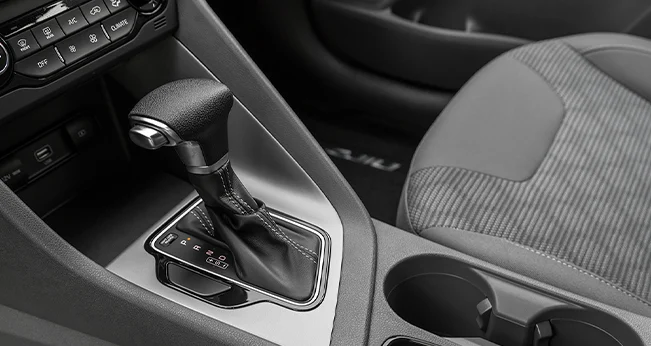
The 2019 Hyundai Kona EV with the 201 hp electric powertrain also has a top speed of 103.8 mph but will do zero to 60 in 6.4 seconds (according to the manufacturer, when new). The 2019 Hyundai Kona EV with the 201 hp engine gets an EPA-estimated 120 MPGe combined, with a full charge.††

Emissions
Both the Niro and the Kona have models with zero tailpipe emissions, look for the electric models if this is important to you. Otherwise, take a look below to see the full EPA-estimated figures.
Kia Niro
According to EPA estimates, the 2019 Kia Niro with the 201 hp electric powertrain produces 0 tailpipe greenhouse gas emissions per mile.
The 2019 Kia Niro with the 1.6L hybrid engine has EPA-estimated tailpipe greenhouse gas emissions of 90 grams per mile.
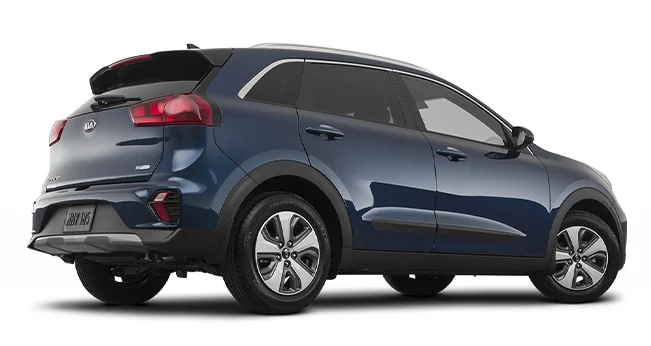
Hyundai Kona
According to EPA estimates, the 2019 Hyundai Kona EV with the 201 hp electric powertrain produces 0 tailpipe greenhouse gas emissions per mile.
The 2019 Hyundai Kona with the 2L 147 hp engine has EPA-estimated tailpipe greenhouse gas emissions of 300 grams per mile.
The 2019 Hyundai Kona with the 1.6L 175 hp engine has EPA-estimated tailpipe greenhouse gas emissions of 303 grams per mile.

These estimates are based on a brand-new model. Visit fueleconomy.gov for more details.
The Bottom Line
The Kia Niro and the Hyundai Kona are both compact SUVs that have hybrid or electric options. The Niro comes standard with a hybrid engine and also offers a fully electric model. The Kona comes standard with an internal combustion engine but model years 2019 and later also offer a fully electric option. The Niro and Kona have comparable features, cargo space, and average prices. The Niro offers three additional inches of legroom in the rear, but the Kona stands out for offering an all-wheel drive option.
Looking for more information? Check out these related articles:

